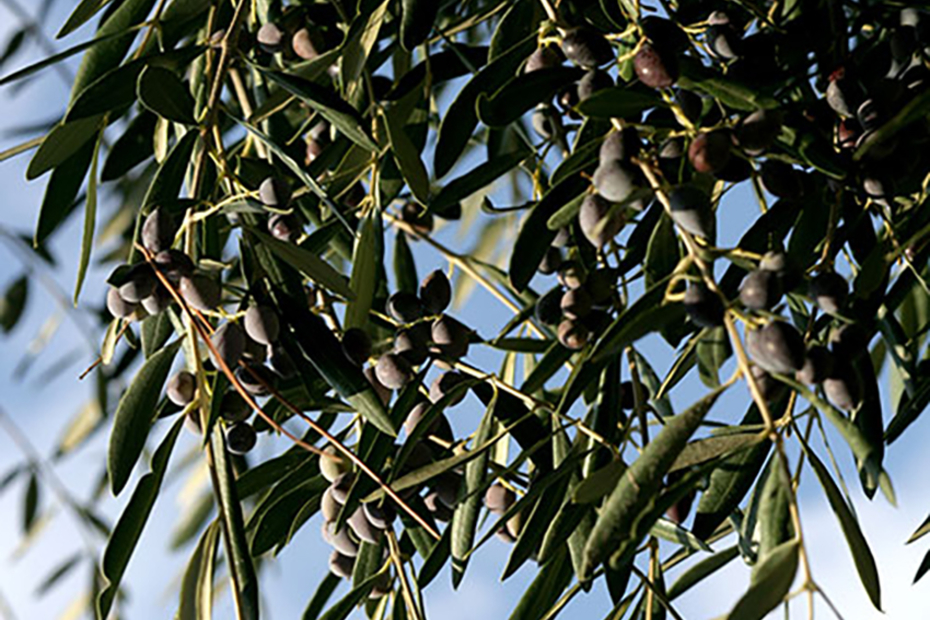Thanks in part to the long history of the olive tree in Greece, there are many varieties of olives. Most are either exclusively oil olives or table olives, although there are a few varieties that be processed both as table olives and pressed for oil.
According to the weight of the fruit the varieties are distinguished as follows:
Small fruit (weight up to 2 grams)
Asprolia, Koroneiki, Koutsourelia, Lianolia, Matolia, Spertolia, Thiaki, Tragolia, Tsounati.
Medium fruit (weight from 2 to 5 grams)
Adramytini, Daphnolia, Galatsaniki, Kothreiki, Mavrolia, Megaritiki, Pikrolia, Throumbolia.
Large fruit (weight above 5 grams)
Amphissis (Konservolia), Vasilikada, Kalamon, Karydolia, Kolymbada, Melolia, Strongylolia.
There are 10 prominent varieties for the production of olive oil:
1. Koroneiki, the most prominent of the olive tree varieties in Greece is called by many different names, as it is cultivated in many different areas. It is the strongest of the Greek varieties and the least demanding in terms of moisture, soil and care. One of its main advantages is its steady and relatively stable yield. Its main areas of cultivation are the southwestern Peloponnese, Crete, and the Ionian Islands. Its oil is considered the finest of all other varieties with exceptional aroma and taste. It has a high content of oleic acid and a very high stability.
2. Lianolia is another almost equally highly rated variety, cultivated in the Ionian Islands and Western Greece. It is not as hardy as the Koroneiki and is very vulnerable to the main enemy of the olive tree: the olive fly. Its olive oil possesses a particular taste and aroma that is very valued in foreign markets as more delicate than that of Koroneiki.
3. Konservolia is of medium hardiness and productivity is high and alternate (pt—what does this mean?). Its ability to adapt to different environmental conditions permits it to be cultivated from sea level up to an altitude of 500 – 600 metres. It is one of the varieties whose fruit yields a good amount of quality olive oil. The flesh of the fruit is firm and therefore resistant to damage during transportation and handling. Because of that it is also the most important table olive variety in Greece, and is processed as a black brined olive. It accounts for 70% to 85% of the total acreage devoted to table olive cultivation, and it is grown mainly in central Greece.
4. Tsounati is cultivated mainly in Crete and accounts for 15-20% of the country’s acreage. It is a hardy variety and can be cultivated to up 1,000 metres above sea level. It is one the varieties that can be picked late in the year, at end of December or even the beginning of January. It is a high-yield variety, producing good-quality oil.
5. Megaritiki is a hardy dual-purpose variety, cultivated in the area of Attica, Boetia,and the Peloponnese. Its fruit gives a medium high oil yield of good quality. It is resistant to dry climates and moderately tolerant of cold.
6. Valanolia is of medium hardiness and its cultivation extends over most of the Eastern Aegean Islands. On the island of Lesvos (Mytilene) it accounts for 70% of the olive growing acreage, which makes it an important variety nationally since Lesvos contributes 10% to 20% of the annual Greek oil. The oil it produces is rated very highly.
7. Andramytini is another variety that is largely cultivated on the island of Lesvos covering about 20% of the olive growing acreage. It is a hardy variety of high oil content. It is sensitive to attacks from olive fly, moderately resistant to cold and can be cultivated up to 500-600 metres above sea level.
8. Chalkidiki, a variety of medium hardiness is cultivated in the Chalkidiki area of northern Greece. The fruit is harvested early and gives a medium oil yield. It is dual purpose and is used for green pickling
9. Matolia is dual purpose and mainly cultivated in Ilia, the western Peloponnese, where it accounts for 90% of the trees. It is sensitive to olive fly and is picked 15 to 20 days earlier than the Koroneiki cultivated in the same area. The yield is rather poor but the oil is of good quality.
10. Kalamon is of medium hardiness and of dual purpose. It is grown chiefly for Greek-style black olives. Productivity is high and alternate. It gives a medium yield of excellent quality oil. It is moderately resistant to cold and sensitive to excessively hot climates.







